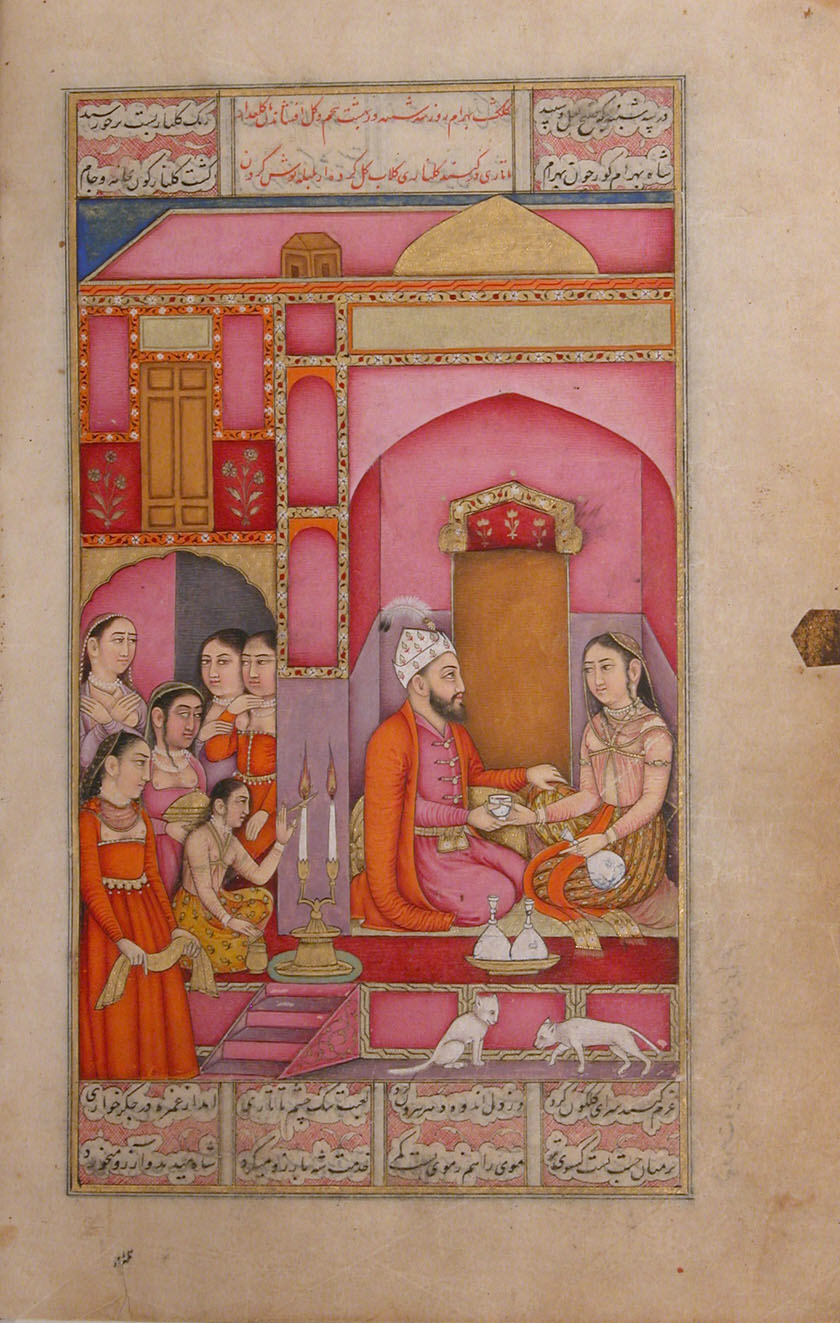Anne de Wilde's elevation dress.
A friend of mine has been making an elevation dress for Canterbury Faire this year and has been sharing the construction on facebook. It is a lovely Venitian dress inspired by this image, a lady from the 1600's. When she posted the finished dress I was interested by the fact the main body of the dress ends below the breasts which are covered by a plain or decorated partlet. There is a whole section of images of these dresses here. Apart from being a beautiful dress which has taken her hours to construct, it also reminded me of an interesting image I'd found when browsing the collection in the Met Museum. The image below featured in one of my classes on indian choli tops. I was fascinated by the contrast in garb between the central figure and the ladies on the left looking on. I was quite taken with the European garb combined with the indian veils etc. I had thought the European garb was Elizabethian garb depicted in such a way that still displayed the ladies breasts for some sort of symbolic reason. Now I'm not so sure.
The ladies could quite well be wearing complete Venetian dresses. Even better, if you examine the center lady in pink, there appears to be some pinkish gathers coming from her neck and the lady in purple on the far left also seems to be sporting a neckline of some sort. Is it possible that this manuscript also shows light weight, solid colour fabrics as transparent? This would fit with other images I've seen of more traditionally dressed indian ladies wearing light fabrics depicted as a wash over the womens body or a halo behind it so the breasts and upper body can still be seen.
17th century manuscript depicting Amir Khusrau Dihlavi (1253–1325).
Given my other research interests at the moment my next step will be to examine the bottle in the central figures hand as well as any other time frame indicators in this and associate images and see if I can nail down the reason for the dresses. Are they contempory to the time of painting (was there a Ventian influence?) or are they from a period before the manuscript was painted?


No comments:
Post a Comment